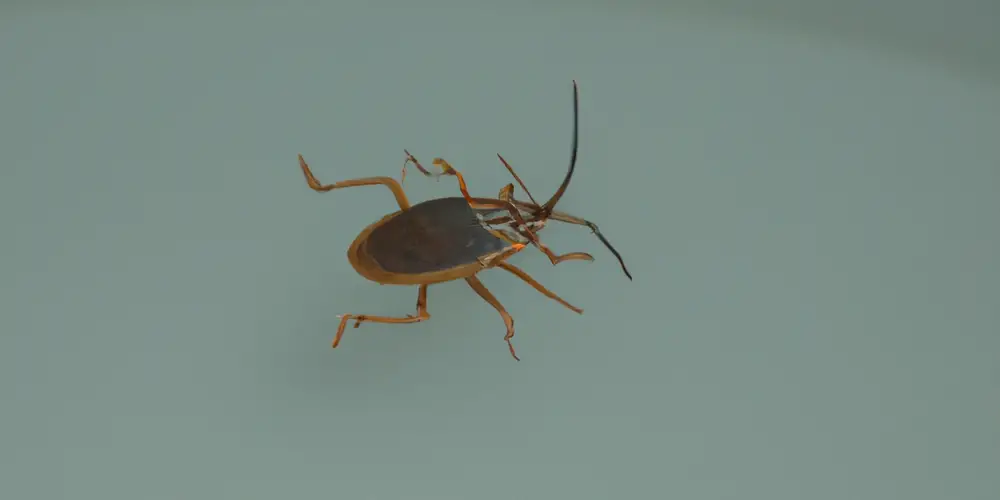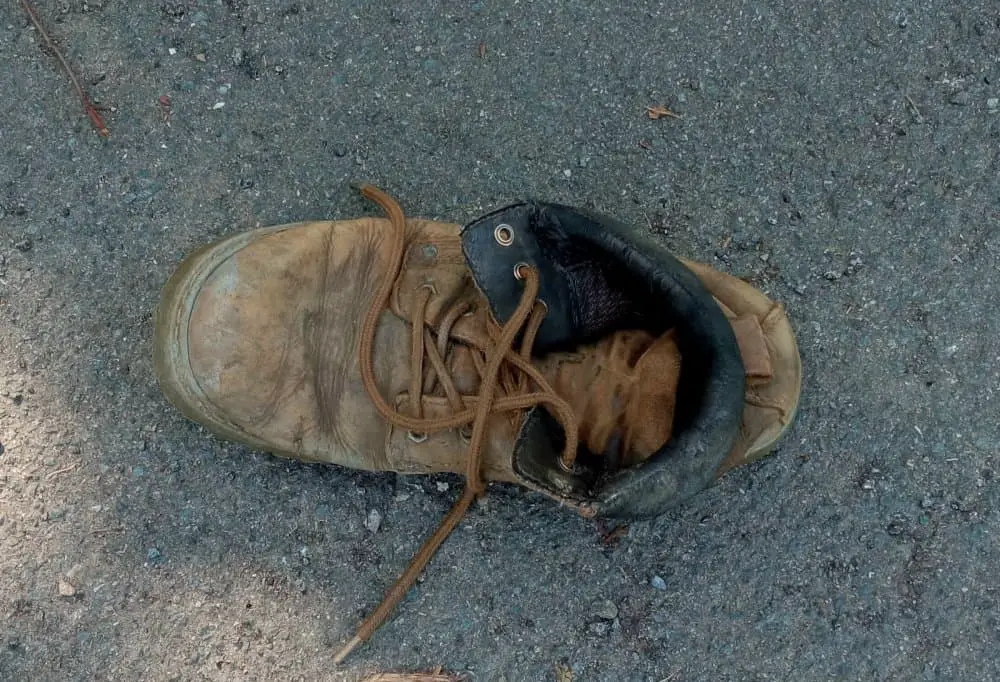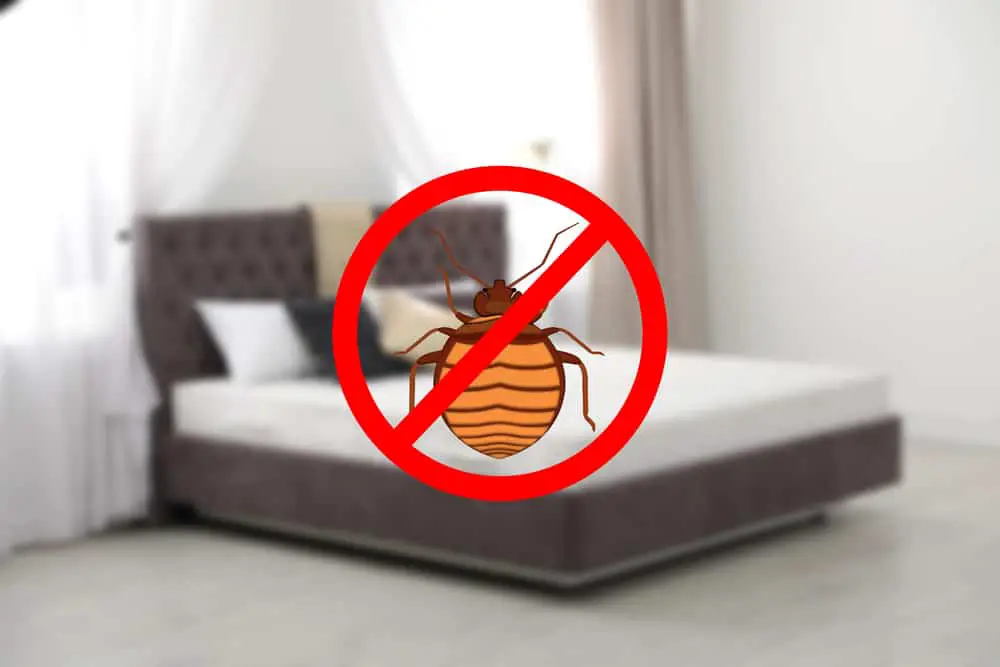Bed bugs are notorious for their ability to infest various objects and spaces, causing discomfort and distress to those affected by their presence.
While these pesky creatures are commonly found in bedding, couches, and carpets, many people wonder if bed bugs can live in shoes.
Yes, shoes can certainly serve as a temporary home for bed bugs, especially if they are worn or stored in an infested area. These insects can easily navigate through tiny spaces and latch onto various surfaces, including the fabric or leather materials found in shoes.
The dark and narrow crevices provide a perfect shelter for bed bugs, making it essential to inspect and treat footwear if dealing with an infestation.
Is it Potential for bed bugs to live in shoes?
Let’s explore the possibility of bed bugs infesting your shoes and how you can handle this situation.
Determining the Possibility
- Size: Bed bugs are small in size, ranging from 1 to 7 millimeters, which makes it easy for them to hide in the seams and tiny spaces in your shoes.
- Shoes as a hiding spot: Shoes provide a dark and secluded environment, which bed bugs prefer. However, they don’t typically reside in shoes for long periods and generally use them as temporary hiding spots.
- Presence of humans: Bed bugs are attracted to the scent of humans, and shoes can carry your smell, making them more prone to infest your shoes.
- Travel: Bed bugs are skilled hitchhikers and can easily tag along on your shoes, especially when traveling. If you’ve stayed in an infested hotel room or visited an infested area, there’s a chance you might have brought some bed bugs back with you on your shoes.
To avoid bed bugs living in your shoes, consider the following proactive measures:
- Regularly inspect your shoes for signs of bed bugs, such as tiny dark spots (feces), eggs, or the bugs themselves.
- Store your shoes in a well-lit and open area, as bed bugs prefer dark and confined spaces.
- If you suspect your shoes are infested, you can treat them with appropriate insecticides or heat treatment, as bed bugs are susceptible to temperatures above 120°F (48.9°C).
Common Hiding Places for Bed Bugs

Furniture and Bedding
Bed bugs are known to hide in various types of furniture, especially in mattresses and bed frames. They often seek out dark, secluded places to stay during the day, like box springs, headboards, and the seams of mattresses and pillows. Be sure to regularly inspect and vacuum these areas to prevent bed bug infestations.
Clothes and Shoes
Bed bugs can also live in clothes, particularly if they are stored in piles or left lying around. They may also be found in shoes, especially if the shoes are stored in closets or other closed-off areas where bed bugs can hide. To minimize the risk of attracting bed bugs, keep your clothes and shoes properly stored and launder them regularly.
Luggage and Electronics
Travelers need to be cautious, as bed bugs can hitchhike in luggage, especially when staying in hotels or other accommodations. Inspect your luggage upon arriving home and avoid placing it on the bed or furniture, to reduce the chance of bed bugs spreading.
Additionally, bed bugs may hide in electronics, such as computer keyboards, TVs, and other small appliances. To prevent bed bug infestations in electronic devices, keep your living space clean and clutter-free.
Signs and Symptoms of Bed Bug Infestations
Physical Signs on Belongings
Bed bugs can infest various items, including shoes. One of the first signs of an infestation is the presence of small, dark spots on your belongings.
These spots can be fecal matter or molted skin from bed bugs. You might also notice tiny white eggs or live bugs hiding in the seams or crevices of your shoes and other items. Keep an eye out for these signs to identify a potential infestation early.
Bite Marks
If you suspect bed bugs in your shoes or other belongings, pay attention to your skin for any bite marks. These marks often appear as small, red, and itchy bumps, usually in a linear or clustered pattern. Bed bug bites can sometimes be mistaken for mosquito or flea bites, but their unique pattern can help you differentiate them.
Allergic Reactions
Not everyone reacts to bed bug bites in the same way. Some individuals may develop allergic reactions to the bites, which can range from mild to severe. Symptoms of an allergic reaction can include:
- Intense itching
- Swelling around the bite area
- Hives or rash
- Shortness of breath
If you experience any of these symptoms and suspect bed bugs, it’s essential to take appropriate measures to address the infestation.
Remember that early detection and prevention are key. Keep your shoes and other belongings clean and organized to minimize the risk of bed bug infestations.
Removing Bed Bugs from Shoes

When dealing with a bed bug infestation, it’s essential to address all possible hiding places, including shoes. Here are some effective methods to remove bed bugs from shoes, ensuring they don’t continue to cause problems.
Cleaning and Washing Shoes
First, inspect your shoes thoroughly for any signs of bed bugs, such as eggs, feces, or shed skins. Once you’ve identified infested shoes, start with a thorough cleaning. Consider the following steps:
- Washing: Put your shoes in a washing machine if they’re washable. Use hot water, as high heat can effectively kill bed bugs and their eggs. Add laundry detergent for a thorough cleaning.
- Drying: After washing, place the shoes in a clothes dryer on high heat for at least 30 minutes. The intense heat will eliminate any remaining bugs.
- Steam cleaning: Use a steam cleaner on non-washable shoes to expose them to high heat and moisture. Be sure to reach all the nooks and crannies where bed bugs might be hiding.
Freezing and Heat Treatment
Another option for treating shoes infested with bed bugs is the use of temperature extremes.
- Freezing: Seal your shoes in plastic bags and place them in the freezer for at least four days. The cold will kill off bed bugs and their eggs.
- Direct sunlight: Put your shoes outside in direct sunlight on a hot day for several hours. The high heat can be an effective treatment to help get rid of the bugs.
Professional Exterminator Services
If you’re unsure how to proceed or if the infestation is widespread, seeking professional exterminator services is a smart choice. These experts are experienced in dealing with bed bugs and can provide the necessary treatment tailored to your situation.
They may use:
- Insecticide sprays: These professionals may employ specialized bed bug sprays that are more effective and targeted than off-the-shelf products.
- Heat treatment: Professional exterminators have access to advanced heat treatment equipment that can be used to treat your shoes and other belongings thoroughly.
Preventing Bed Bug Infestations
Properly Storing Shoes and Clothes
To prevent bed bug infestations in shoes and clothing, store them in sealed plastic bags or containers. This will keep away parasitic insects like bed bugs and lice.
When possible, avoid placing shoes and clothes directly on the floor, as bed bugs may be lurking in nearby box springs, bed frames, or headboards. Storing items in plastic bags will also help eliminate odors, which can attract insects.
Regular Inspections and Cleanliness
Inspect your shoes and clothing regularly for signs of bed bug infestations. Look for small black or brown dots, which may indicate bed bug feces. Also, maintain cleanliness by washing your shoes and clothing on the highest heat setting, per the manufacturer’s guidelines. Using detergent and a high heat setting will kill any bed bugs that might be present.
If you suspect an infestation in your shoes or clothes, place them in a sealed plastic bag and expose the bag to direct sunlight for a few hours. The heat from the sun will help kill any remaining bed bugs. After sun exposure, carefully inspect your items before reintroducing them to your home.
Pest Control Measures

If you discover bed bugs in your shoes, clothing, or home, consider using diatomaceous earth as a non-toxic way to control the infestation. Diatomaceous earth is a natural substance that kills bed bugs by damaging their exoskeletons, causing them to dehydrate and die.
For more significant or persistent infestations, contact a professional pest control company. These experts can provide heat treatments, which are an effective way to eliminate bed bugs in your home, including your shoes and clothing.
Suitable Materials for Bed Bug Resistance
When it comes to keeping bed bugs away from your shoes, knowing the most effective and resistant materials can help. In this section, we focus on comparing different materials typically used in shoe construction that may exhibit varying bed bug resistance levels.
Compared Effectiveness of Different Materials
- Fabric: Typically, fabric shoes made from materials like cotton are more susceptible to bed bug infestations. Bed bugs can easily attach themselves to the fibers and hide within the fabric’s small crevices.
- Plastic and PVC: Shoes made from plastic or PVC (polyvinyl chloride) materials offer better protection against bed bugs. These materials are non-porous, making it difficult for bed bugs to latch on and find hiding spots.
- Polyurethane: Similar to plastic and PVC, polyurethane is a synthetic material that provides a smoother surface for shoes, making it a less hospitable environment for bed bugs.
- Leather: Leather shoes, particularly those with minimal stitching, offer some protection against bed bugs. However, bed bugs can still hide in the seams or folds in leather materials.
- Suede: Since suede is a type of leather, it shares similar characteristics in terms of bed bug resistance. Due to its softer texture, it may be slightly more vulnerable to infestation than harder, smoother leather.
Insole Materials: The insole of a shoe can also impact its bed bug resistance. Insoles made from synthetic materials or tightly woven fabrics are generally less conducive to bed bug infestations.
When considering bed bug resistance in other household items, such as carpets, fabric-based materials tend to be more inviting to bed bugs than synthetic materials.


